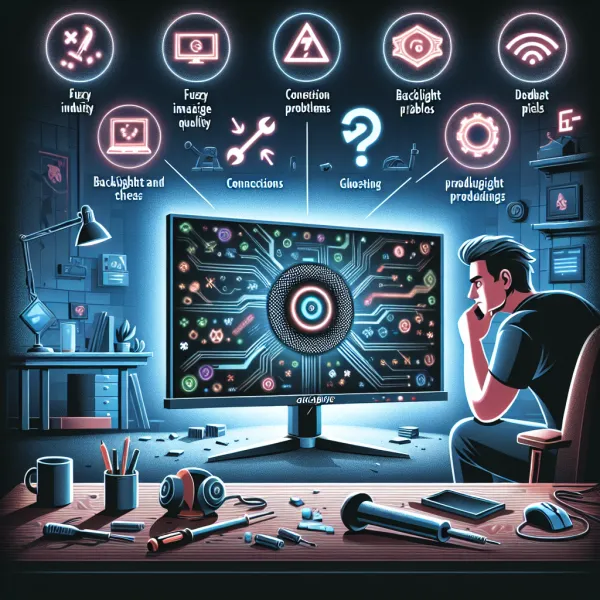5 Common Problems with the Gigabyte AORUS FI32U Monitor and How to Address Them
5 Common Problems with the Gigabyte AORUS FI32U Monitor and How to Address Them
The Gigabyte AORUS FI32U is a high-performance 4K gaming monitor that has garnered attention for its stunning visuals, fast refresh rates, and impressive features. However, like any piece of technology, it’s not without its flaws. In this article, we’ll explore five common problems users encounter with the Gigabyte AORUS FI32U and provide actionable solutions to help you get the most out of your monitor.
1. Backlight Bleeding
One of the most frequently reported issues with the Gigabyte AORUS FI32U is backlight bleeding. This occurs when light leaks around the edges of the screen, especially noticeable in dark scenes or when the monitor is displaying a black background.
Solution: While some level of backlight bleeding is common in IPS panels, you can minimize its impact by adjusting the brightness and contrast settings. If the issue is severe, consider contacting Gigabyte’s customer support for a replacement or repair under warranty.
2. HDR Performance Issues
HDR (High Dynamic Range) is a key feature of the FI32U, but some users have reported that the HDR performance doesn’t meet their expectations. Colors may appear washed out, or the brightness levels may not be as dynamic as advertised.
Solution: Ensure that HDR is enabled both on your monitor and in your system settings. Additionally, calibrate the monitor using professional calibration tools or software to achieve optimal color accuracy. Updating the monitor’s firmware can also resolve HDR-related issues.
3. Connectivity Problems
The FI32U offers a variety of connectivity options, including HDMI 2.1 and DisplayPort 1.4. However, some users have experienced issues with signal detection or compatibility, particularly when using HDMI 2.1 for gaming consoles like the PS5 or Xbox Series X.
Solution: Double-check that you’re using certified HDMI 2.1 cables and ensure that your console or PC is set to output the correct resolution and refresh rate. If the problem persists, try updating the monitor’s firmware or resetting it to factory settings.
4. Ghosting and Motion Blur
Despite its 144Hz refresh rate and 1ms response time, some users have reported ghosting or motion blur during fast-paced gaming sessions. This can detract from the immersive experience the monitor is designed to deliver.
Solution: Adjust the overdrive settings in the monitor’s OSD (On-Screen Display) menu. Setting it to a moderate level can help reduce ghosting without introducing overshoot artifacts. Additionally, ensure that your graphics card is powerful enough to maintain high frame rates at 4K resolution.
5. OSD Navigation Challenges
The On-Screen Display menu of the FI32U offers a wealth of customization options, but some users find it unintuitive or difficult to navigate. This can make it challenging to fine-tune the monitor’s settings to your liking.
Solution: Familiarize yourself with the OSD joystick and shortcuts. Gigabyte also offers the OSD Sidekick software, which allows you to control the monitor’s settings directly from your PC. This can make the process much more user-friendly.
Final Thoughts
The Gigabyte AORUS FI32U is undoubtedly a powerful monitor that delivers exceptional performance for gamers and professionals alike. While it does have its share of issues, most of them can be resolved with a bit of troubleshooting and customization. By addressing these common problems, you can fully enjoy the stunning visuals and advanced features this monitor has to offer.
If you’re considering purchasing the FI32U or already own one, don’t let these challenges deter you. With the right solutions, this monitor can be a game-changer for your setup.
